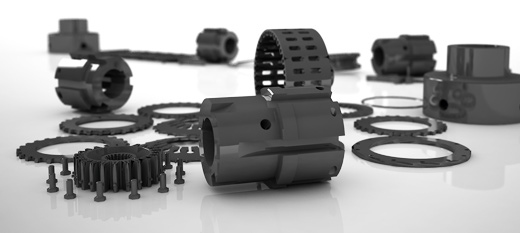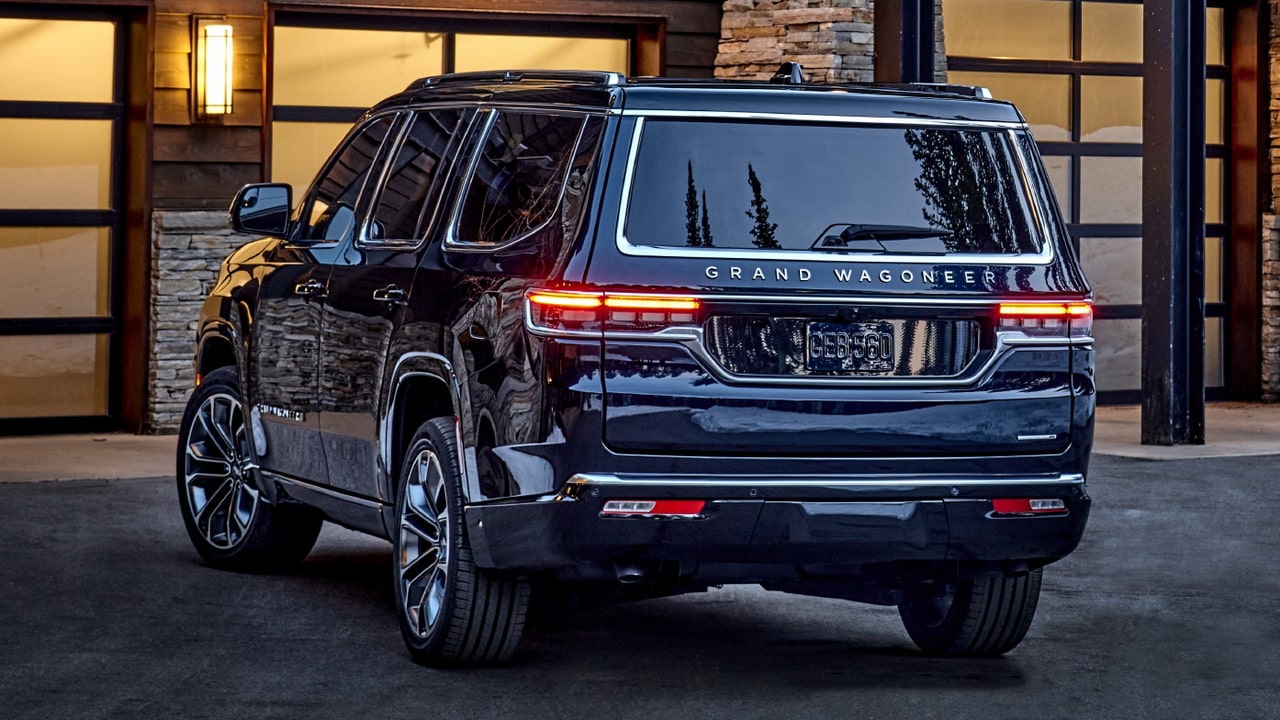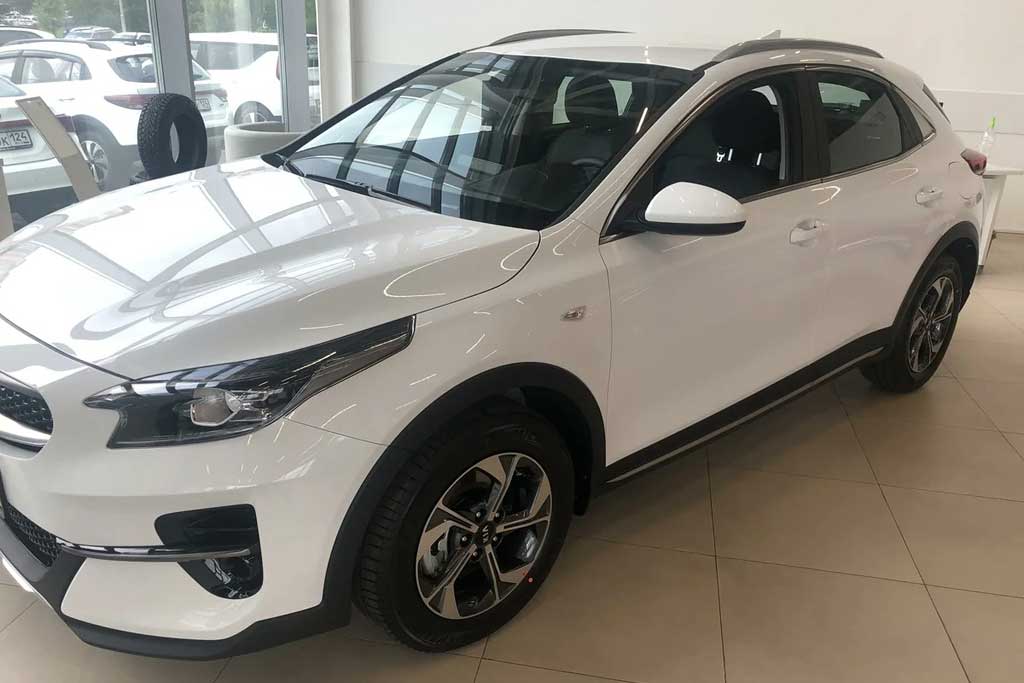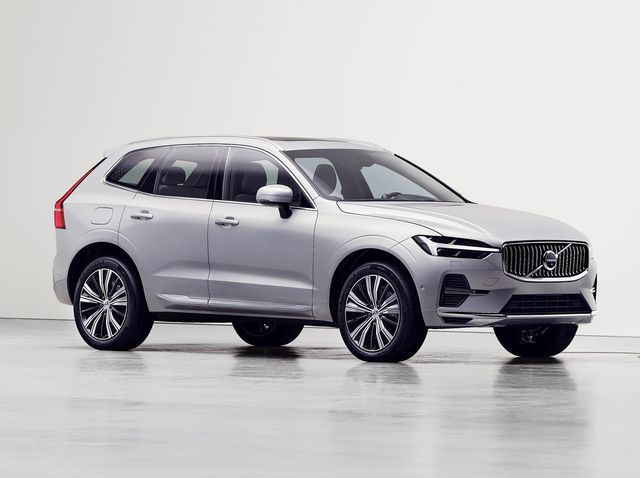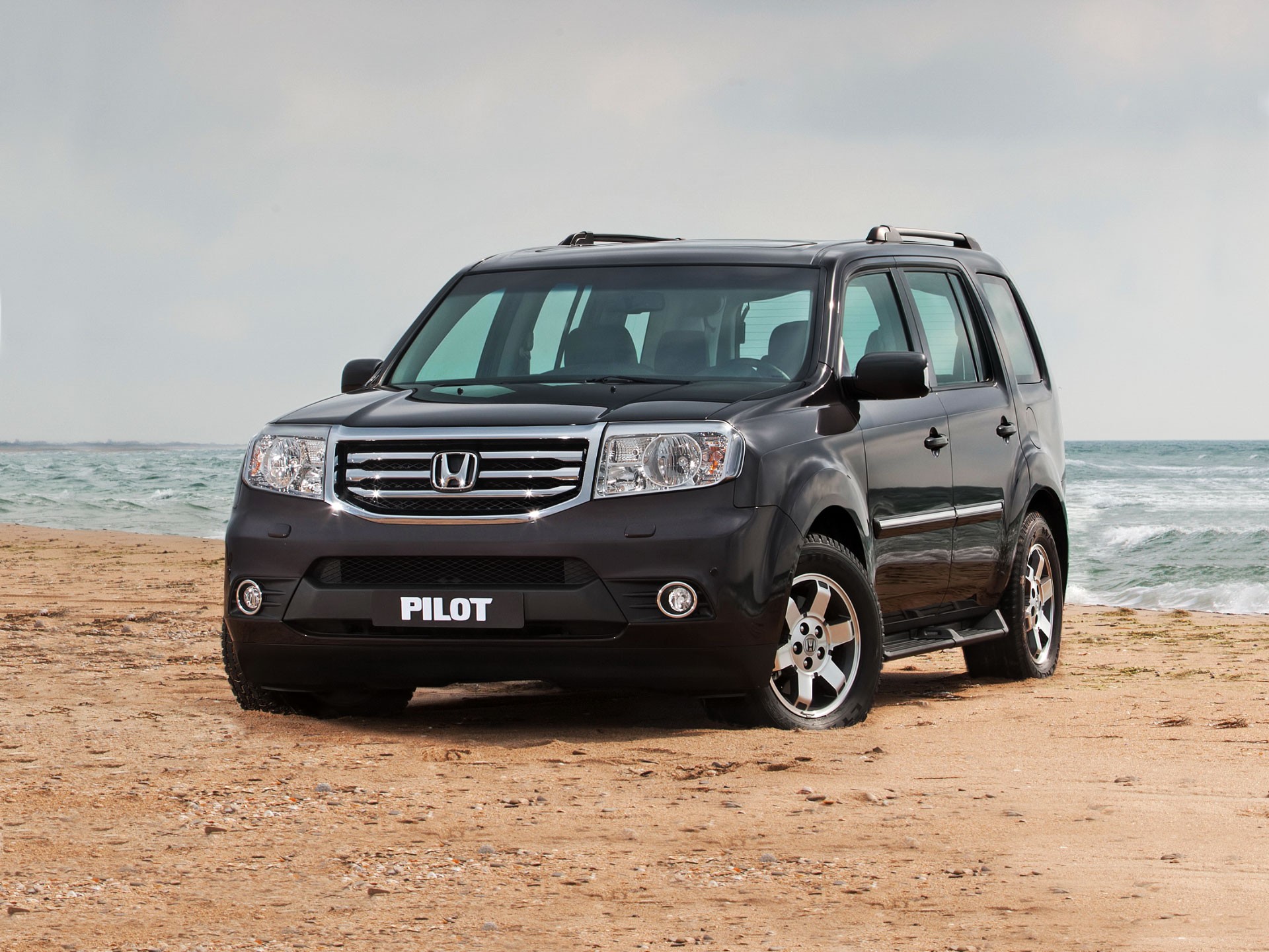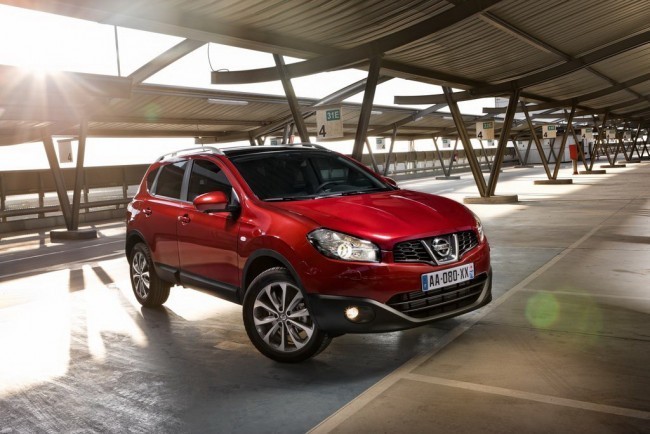- Чем отличается кроссовер от SUV и кто такие на самом деле внедорожники
- Crossover vs. SUV: What’s the Difference?
- Advantages of an SUV Over a Crossover:
- Towing Capacity:
- Off-Road Capability:
- Durability:
- Advantages of a Crossover Over an SUV:
- Comfort and Ride Quality:
- Safety:
- Fuel Economy:
- What is a True SUV?
- The Move Toward Crossovers:
- What is the Difference Between a Crossover and Other Types of “Utility” Vehicles?
- Buying a Crossover vs an SUV:
- Buying a Crossover vs a Minivan:
- Buying a Crossover vs a Car:
- Some Crossover vs SUV History:
Чем отличается кроссовер от SUV и кто такие на самом деле внедорожники
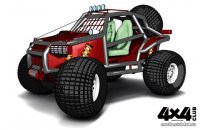
А еще появились какие-то «вседорожники» и загадочные «бездорожники».
«Ширится, растет заболевание». Вместе с полноприводным (или все же кроссоверским?) бумом BMW ради своего X6 учредил класс SAC – Sport Activity Coupe. Так сказать, в противовес утилитарным Sport Utility Vehicle с нажимом на спортивную составляющую. Появились «городские кроссоверы», под определение которых, кажется, попадают все автомобили, умеющие хоть немного лучше типовых легковушек взбираться на бордюр. А вот еще УПП – универсал повышенной проходимости, что за зверь? И чем он не кроссовер или «паркетник»?
Кто же из них кто и насколько терминологические штампы соответствуют истинным вездеходным способностям? Где критерии внедорожных качеств и полноты привода? И как провести черту между простыми легковушками и вездеходами?
TOD. Аббревиатура означает передачу мощности на второй мост исключительно по потребности
ПРОСВЕТ – ВСЕМУ ГОЛОВА
Когда давным-давно на автосалоне в Париже появился только что увидевший свет ВАЗ-2108, пресса метко окрестила его «журавлем на тоненьких ножках». Исключительно потому, что в целом пропорциональный кузов высоко стоял на колесах довольно большого диаметра, а под бамперами отсутствовали привычные европейцам спойлеры и фартуки. Понятно, это была дань нашим отвратительным дорогам, но в сегодняшнем понимании легковой автомобиль с подобным просветом – 160 мм – уже неплохой вездеход.
Именно дорожный просвет, а не только полный привод сам по себе, определяет вездеходность машины, и в итоге адресует ее в тот или иной класс. Сравните: кроссовер Nissan Murano с клиренсом в 180 мм имеет ходовую, очень близкую к полноприводному седану Nissan Teana Four (с блокируемой муфтой заднего привода от Nissan X-Trail). Но кроме более длинного кузова, Teana еще и ниже посажена, ее клиренс – 150 мм. И несмотря на отлично работающий полный привод (единственный седан класса Е с принудительно блокируемой многодисковой муфтой), ее проходимость хуже. Хотя, признаться честно, в умелых руках Teana Four почти не уступает Murano по части преодоления проселочных дорог и снега.
По такому пути идут многие производители, преобразуя свои легковушки по стандартному рецепту: клиренс побольше (на 1–2–3–4 см), внешний вид погрубее (неокрашеные накладки арок, псевдозащиты фартуков), иногда – полный привод. Как правило, это и есть универсалы повышенной проходимости (Audi Allroad, Skoda Octavia Scout, Volkswagen Passat Alltrack). Все они желают ухватить кусок пирога со стола кроссоверского бума. И если не стать кроссовером по сути, то хотя бы получить его имидж. Но все эти уловки – не более чем маркетинговый ход. Никакое реальное бездорожье этим автомобилям не по зубам. Мы с вами уже знаем, что для него под брюхом должно оказаться не меньше 160 свободных миллиметров.
ВОЛШЕБНАЯ МУФТА
Если я скажу, что многодисковая муфта подключения второго ведущего моста сегодня вытеснила практически все остальные системы полного привода, это не будет преувеличением. От большого трехтонного Chevrolet Tahoe до компактного Opel Mokka везде единый принцип: основной мост подключен всегда, дополнительный – посредством муфты. Почему это выгодно? Потому что то, что раньше решалось при помощи разнообразных дифференциалов и дополнительных шестерен, требовало разработки, испытаний и воплощений в железе, сегодня представляет собой компактный цилиндр размером с голенище сапога да пучок проводов к блоку управления. К тому же если потребуется изменить алгоритм работы узла, его не надо даже снимать с машины – достаточно переписать программу срабатывания.
В изменении программы работы муфты кроется великий потенциал ее долгой жизни. «Играя» передаваемым моментом и контролируя собственную температуру, современные муфты способны довольно долго помогать бороться с грязью. Однако не стоит обольщаться. Рано или поздно в битве за очередной метр муфта перегреется и отключится.
Но вот что интересно. Бюджетные версии кроссоверов зачастую не имеют полного привода вообще, фактически мало отличаясь по проходимости от приснопамятной «восьмерки». Просто потому, что далеко не всем вообще этот самый полный привод нужен. А достаточно просвета повыше, колес побольше да… имиджевого сходства с кланом настоящих, брутальных и многое могущих вездеходов.
Наши заокеанские «новые стратегические партнеры» давно уже раскусили этот феномен, и в угоду рынку, вернее – самой бережливой его части, многие десятилетия штампуют все без исключения модели кроссоверов, равно как и рамных внедорожников еще и в моноприводном исполнении. На вид – сердито, по сути – дешево и возможностей побольше, чем у легковушки.
СПОРТИВНО-УТИЛИТАРНЫЕ
Именно поэтому среди массы техники AWD выделился подкласс более честных, заведомо полноприводных машин. Они как минимум имеют раздаточную коробку и, значит, гораздо более выносливы на реальном бездорожье. Моноприводов среди них нет, а частенько есть модели с понижайкой. Это автомобили сегмента SUV – как правило, более дорогого, чем обычные кроссоверы, но и пользы в пампасах от них несравнимо больше. К ним относятся все крупные полноприводники концерна Volkswagen (Touareg, Porsche Cayenne), Mercedes M-класс, Toyota LC и Prado, Nissan Patrol. А вот у вполне брутального Nissan Pathfinder образца 2005 года передний мост, хотя и приводится через полноценную раздатку, подключается все той же многодисковой муфтой. К тому же за четыре поколения он дважды был рамным внедорожником и дважды становился кроссовером с несущим кузовом.
Определим, наконец, что SUV – это полноценный, иногда рамный внедорожник с вариациями мощного (подключаемого или постоянного) полного привода и широкими вездеходными возможностями. SUV имеет собственную платформу или единую с еще более крупными моделями (иногда пикапами). На этих машинах можно соваться в грязь. Их подвеска рассчитана на неровности и артикуляцию.
Кроссоверы – лишь подражание SUV, построенное на легковом шасси. Они только кажутся проходимцами, будучи на самом деле легковыми машинами с чуть более развитыми способностями. Единственный их козырь – дорожный просвет.
Вседорожники – это по сути правильное название внедорожников, поскольку транспорт для движения вне дорог – не совсем то, о чем мы ведем речь. Как ни смешно, настоящий внедорожник – это карьерный самосвал, гусеничный вездеход или шнекоход.
И бездорожники – не асфальтовые жители. Это скорее багги и всевозможные вездеходы на арочных колесах, созданные двигаться исключительно вопреки отсутствию дорог.
Вот такая получается занимательная терминология, в которой на 100% все равно не будет ясности. Неизбежно найдутся «кросс-классовые» индивидуумы, сочетающие легковой кузов с полноценным приводом (как наша «Нива») или, наоборот, раму с многодисковой муфтой.
Дорожный просвет, клиренс
> 160 мм
SAC и спортивные кроссоверы
Прочный несущий кузов, спортивный двигатель, постоянный полный привод, большие ходы независимой подвески, иногда с пневморегулировкой.
> 180 мм
SUV (спортивно-утилитарные)
Прочный несущий кузов, возможно наличие раздатки, большие ходы независимой подвески, иногда с пневморегулировкой.
150–215 мм
Моноприводные кроссоверы
Несущий кузов, привод на один мост, средние ходы подвески. По проходимости близки к легковому автомобилю на слегка увеличенных колесах.
150–215 мм
Городские кроссоверы
Несущий кузов, раздатки нет, дисковая муфта подключения второго моста (TOD) или постоянный привод с муфтой Torsen, малые ходы подвески, экономичный двигатель.
160–200 мм
Кроссоверы
Прочный несущий кузов, раздатки нет, дисковая муфта подключения второго моста (TOD), увеличенные ходы подвески, электронные имитации блокировок.
> 190 мм
Современные внедорожники
Прочный несущий кузов, раздатка с пониженной передачей, блокировки, большие ходы независимой подвески, часто пневморегулировкой.
> 140 мм
Полноприводные микроавтобусы
Несущий кузов, раздатки нет, дисковая муфта подключения привода второго моста (TOD), малые ходы подвески.
200 мм
Полноценные внедорожники
Рама, раздатка с пониженной передачей, постоянный или подключаемый полный привод, блокировки, большие ходы подвески.
Первые серийные полноприводные внедорожники
Рама, легкий открытый кузов, подключаемый полный привод, полноценная раздатка с пониженной передачей, малый вес.
Источник
Crossover vs. SUV: What’s the Difference?
Traditional SUVs feature a body-on-frame construction. That is a rolling chassis that is mated with the body of the vehicle, like most pickup trucks today. A crossover has a unibody design – a singular frame that, when all the body panels are stripped away, just looks like the outline of a fully-formed vehicle without anything on it. This is how cars are manufactured.
SUVs are the hottest segment of the automotive market, but not all SUVs are created equal. Despite the term “crossover” usually being used interchangeably with “SUV,” the two are not the same. The terms are even used together to create a kind of distinction between the two main types of larger, hatchback-like sport utility vehicles that are not trucks, cars, or minivans.
As crossovers, or crossover SUVs, as many call them, have gained popularity, the distinction between a traditional SUV and a crossover has been lost. There are several important differences between the two, and the distinction should be better understood.
Advantages of an SUV Over a Crossover:
Traditional SUVs have a few notable advantages over crossover SUVs. Because they utilize a truck platform, they have many of the advantages that pickup trucks provide over other vehicles with some of the practicality that comes with a minivan or station wagon.
Towing Capacity:
Pickup trucks can tow more than minivans and cars not only because they are often equipped with larger engines, but more so because their frame construction can take the extra load that trailers bring. The same can be said of SUVs. SUVs like the Chevy Tahoe, Toyota Sequoia, and Ford Expedition are often rated for higher towing capability than their crossover competitors.
Not every SUV can out-tow every single comparable crossover, and compact SUVs like the Jeep Wrangler are not usually used to tow large loads as the full-size Chevy Suburban can, but generally speaking, SUVs are more suited for the task.
Off-Road Capability:
Another design advantage SUVs have is their greater ability to go off-road than most comparable crossover SUVs. This is because their two-piece frame construction allows for the stresses of uneven pavement to be distributed through the chassis and less through the actual vehicle body, allowing some flexibility within the vehicle’s overall construction.
In a crossover, the unibody frame is one piece, necessitating that any twisting and turning over harsh terrain is absorbed by the entire vehicle. This causes stress points on the frame construction that would not be present on an SUV. Additionally, ground clearance is typically heightened in SUVs, again allowing for easier passage over rough terrain.
SUVs like the Jeep Wrangler, Toyota 4 Runner, Ford Bronco, and even the Chevy Tahoe have strong aftermarket support for off-roading equipment. Some of them even come from the factory with off-road packages. Crossover SUVs like the Subaru Forester, Toyota Rav4, and Honda Pilot will occasionally be fitted from the factory with similar packaging, but their capability is usually diminished in comparison.
Durability:
Trucks are generally built to be workhorse vehicles, and their body-on-frame construction allows them to be heavier, beefier, and generally more durable than cars that are not designed to handle excess stresses of towing and off-roading. Even though this does not automatically mean that SUVs utilizing a truck platform will last longer, but it does mean that they can take more of a beating and have more potential to come out relatively unscathed.
Advantages of a Crossover Over an SUV:
The advantages that crossover SUVs bring to the table over traditional SUVs are some of the reasons they have become much more popular over the past decade, the largest being that they are typically better suited for overall everyday road use.
Comfort and Ride Quality:
Because crossovers are based on a car platform as opposed to a truck platform, they provide many of the same driving dynamics that cars provide. This often translates to a more car-like ride than a rough pickup truck-like ride, aiding in overall drivability. You will still most like feel the weight of a larger vehicle as opposed to a car, which can certainly bring its own degree of a truck-like experience, but ride quality is generally closer to a minivan.
Safety:
By way of their design, crossovers tend to provide better overall protection for passengers than SUVs. They are more conducive to the addition of safety technology, especially when it comes to crumple zones and active safety systems because their unibody design allows specific placement and flexibility where body-on-frame does not.
Fuel Economy:
Crossovers are usually lighter than SUVs, and this translates to better fuel economy. Smaller engines are also more easily fitted to crossovers than SUVs, partly because they are based on car platforms, but also because there are far more crossovers that span a wider range of sizes than the comparably few SUVs available at the dealership.
What is a True SUV?
There is no hard and fast definition of a true SUV, but there is also little that differentiates a true SUV from a traditional sport utility vehicle. Generally speaking, a true or traditional SUV just follows the benchmark set by some of the first SUVs that set the stage for everything we have today.
This usually means that a true SUV is one that features body-on-frame construction, is rear-wheel drive by default, features a four-wheel-drive system as opposed to an all-wheel-drive system, and has a transfer case, often with low range gearing for optimal off-road use.
The number of these has dwindled in recent years, but some currently available vehicles that fall under this category include but are not limited to the Ford Expedition, Chevrolet Tahoe, Chevrolet Suburban, Jeep Wrangler, Cadillac Escalade, Mercedes-Benz G-Class, Lexus GX 460, Toyota Sequoia, Toyota 4Runner, and Nissan Armada.
The Move Toward Crossovers:
Even though SUVs evolved from the earliest Jeeps, Suburbans, and Land Rovers, other iconic sport utility vehicles like the Jeep Wagoneer, Chevrolet K5 Blazer, and Ford Bronco came between what many consider to be the start of the modern SUV craze: the Ford Explorer. It really showed the world that an SUV could be a family-oriented vehicle as well as a capable one, and people loved it.
Ford sold more than 300,000 per year during its first generation of existence, and even though it was still a body-on-frame SUV, it outsold every other available SUV of the time, including outselling every imported SUV combined by itself.
From there, other automakers started seeing the value of more family-friendly SUVs, and they caught on. The Jeep Grand Cherokee, Chevrolet Tahoe, and even the Honda Passport followed the Explorer’s lead, but even though the AMC Eagle and Jeep “XJ” Cherokee were technically unibody SUVs, the Toyota RAV4 headed up the official start of the crossover SUV segment.
The rest is history. The Honda CR-V, Nissan Pathfinder, and Subaru Forester headed up the more prominent starters in the crossover game. Today, there are more sizes, shapes, and sub-categories of crossover SUVs than there ever have been. For most, their combination of good fuel economy, car-like ride, available all-wheel drive, increased ride height compared to cars, and overall practicality offers the most bang-for-the-buck.
What is the Difference Between a Crossover and Other Types of “Utility” Vehicles?
The officially recognized CUV terminology did not really exist before the RAV4 came along, but as opposed to a traditional SUV, crossover SUVs usually feature all-wheel-drive systems rather than four-wheel-drive systems, they often come standard with front-wheel-drive as opposed to rear-wheel-drive, and of course, they feature a unibody construction.
Anymore, the term SUV is often just used generically to denote any vehicle that is not a pickup truck, hatchback, minivan, or sedan, but automakers have taken the crossover utility vehicle terminology to all kinds of new heights for marketing purposes.
BMW currently markets its crossover SUV lineup as “sport activity vehicles” to emphasize their combination of luxury, convenience, fuel efficiency, and performance. Other manufacturers sometimes use slightly different terms for crossovers for the same reason. Some vehicles like the Kia Soul and Toyota C-HR are considered subcompact crossover SUVs, but they are not available with all-wheel-drive, leading many people to believe they are regular hatchback cars.
Buying a Crossover vs an SUV:
The differences between a crossover SUV, or a crossover utility vehicle, and other traditional SUVs have been well documented thus far. While compact SUVs, midsize SUVs, and full-size SUVs exist, crossover SUVs are much more popular and feature a wider field from which to choose, even occasionally splitting the traditional segment lines by a thread.
If you do not want a car or minivan, a crossover SUV aims to combine the best of both of those worlds for you. If you need a little more ruggedness, a bit of off-road capability, and some towing needs, a more traditional SUV will suit.
Buying a Crossover vs a Minivan:
Although the minivan segment has dramatically shrunk with the popularity of crossover SUVs, they still have quite a bit to offer. They may not be as “cool” like an SUV, but they usually ride well, have more space than most SUVs, and they often have more family-friendly, practical features – like built-in vacuum cleaners or special, second-row stowaway seating.
Just like with traditional SUVs, there are not that many minivans from which to choose. Many midsize SUVs like the Hyundai Palisade, Honda Pilot, Toyota Highlander, and Volkswagen Atlas even feature third-row seating, making the seven or eight-seat vehicle pool much larger and increasing your chance at getting a more customized vehicle for your specific needs. Additionally, the Toyota Sienna is the only minivan that offers all-wheel drive while just about every 3-row SUV offers some kind of all-wheel drive or four-wheel drive system.
Buying a Crossover vs a Car:
Many crossover SUVs are very similar to hatchbacks with increased ride height. Most cars do not have quite the space that SUVs do, especially when it comes to headroom, but they do usually provide better fuel efficiency, generally fewer maintenance costs because of their size, lower new vehicle cost, and a more engaging driving experience.
Those who appreciate the higher seating position and hatchback practicality that a crossover provides will likely pass on a traditional sedan. Even some of the best crossovers cannot quite provide the engaging driving experience that a well-sorted car can, but many have come close through better technology and consumer demands.
Some Crossover vs SUV History:
Going back to the first cars produced, they all featured a body-on-frame design. This allowed manufacturers to use the same chassis with a different body for ease of interchangeability while keeping costs low. By the 1930s and 40s, the world was experimenting with unibody car frames while it took the American automotive market until the 1960s to really embrace them.
The first real SUV as we know it was the Willys Jeep, built for and used in World War II. It was designed to be small, rugged, and simple to transport troops efficiently while still being maneuverable. The current Jeep Wrangler is a descendent of this vehicle and is one of the only small SUVs on the market to still utilize body-on-frame construction.
From the Willys Jeep sprung the Land Rover, essentially Britain’s version of the Jeep. It was built using the Jeep’s chassis and later used as Britain’s small military vehicle of choice. Outside of its military duty, the Land Rover was mainly used in agricultural applications for transportation and herding, but similar to the Jeep, it was simple and did not have much power.
Unsurprisingly, Toyota did the same thing in the 1950s when their own military needs became great enough by creating the BJ, what we now know as the land cruiser. Even though the Willys Jeep, the Land Rover, and the Toyota BJ are the three most well-known, and possibly most historically significant SUVs, other manufacturers have created their own models throughout history.
Chevrolet created the Carryall Suburban in 1935 as a sort of minibus that could carry up to eight passengers, the Willys Jeep Station Wagon debuted in 1946 and was one of the first vehicles to offer four-wheel drive, and the International Harvester Travelall made the concept of the Suburban a little better by adding a third side door in 1956 for easier passenger access.
All these SUVs and more throughout the coming years would have a profound impact on all the SUVs we have today, including all the crossovers that have grown out of the traditional SUV mold.
Источник
